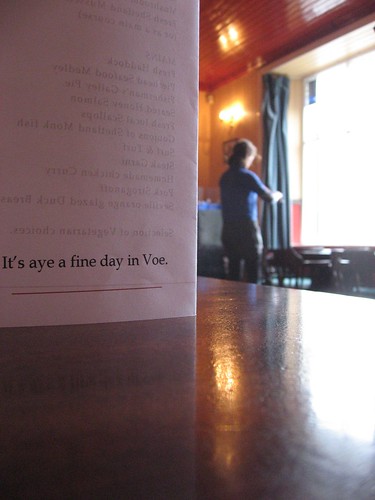 S’iomadh Rud A Chunnaic Mi (Many’s the Thing I Saw) is the latest Slow and Steady tune and is a piece of port a beul (mouth music) that is also a reel. The largely straightforward construction of this tune makes it suitable for getting to grips with the rhythm of the reel.
S’iomadh Rud A Chunnaic Mi (Many’s the Thing I Saw) is the latest Slow and Steady tune and is a piece of port a beul (mouth music) that is also a reel. The largely straightforward construction of this tune makes it suitable for getting to grips with the rhythm of the reel.
I was reminded of this tune through two routes, one through the recent Youtube video of Irish fiddler Kevin Burke and guitarist Mícheál Ó Domhnaill, who sang the port. I believe they recorded this on Portland and the Breton Gavotte that we recently covered also appeared on that album. I also found this tune in Davy Garrett’s gem of a book, An Fhideag Airgid (A Whistle Tutor for Highland Music) as I was looking at a version of A’ Cur nan Gobhar às a’ Chreig, itself a version of the Shetland reel Oot Be Est da Vong, that the Improvers class covered last week.
There’s a discussion of the tune over on The Session, where Nigel Gatherer describes the tune as a version of Cenneag Mhor, which he has music up for on his highly recommended web site. You can also find a translation of the lyrics in that discussion.
The class resources for this tune are in place. The Burke/ Ó Domhnaill version is below. I mistakenly used this to illustrate the Gavotte recently, but I have now corrected that. A version of it can also be found on The Tannahill Weaver’s Cullen Bay recording.


 Last night the Improvers and Beyond class learned Charlie O’Neill’s No.2, the third and final tune of a set comprising a strathspey and two Donegal highlands. The other tunes are Bidh Eoin and Charlie O’Neill’s No. 1.
Last night the Improvers and Beyond class learned Charlie O’Neill’s No.2, the third and final tune of a set comprising a strathspey and two Donegal highlands. The other tunes are Bidh Eoin and Charlie O’Neill’s No. 1. The Improvers class resumed this week with a lively piece of music from the Western Isles via Northern Ireland.
The Improvers class resumed this week with a lively piece of music from the Western Isles via Northern Ireland.